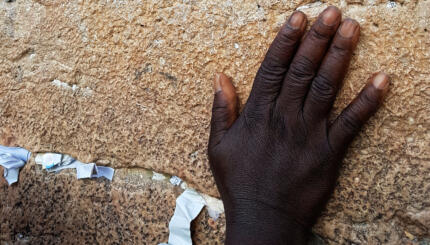As social change is pressing the traditional boundaries of Jewish marriage, both traditional and liberal Jews are demanding that existing customs change to fit current needs. In consequence, rabbis are exploring Jewish law to see whether and how it can respond to the quest of liberal-egalitarian Jews for changes in the ketubah and the wedding ceremony to reflect male-female equality; the demands of lesbians and homosexual men for marriage within the Jewish tradition; and the press by some traditional Jews to popularize prenuptial marriage-protection agreements that protect women from becoming agunot (women whose husbands refuse to give them a get, or Jewish bill of divorce).
The ketubah (traditional wedding contract) is a legal instrument that establishes the husband’s obligations to his wife as well as placing a lien on the husband’s property, providing protection for the wife in case of divorce. Many modern couples reject the ketubah’s lack of mutuality and its focus on financial issues; they prefer instead a document that expresses their personal goals for their upcoming marriage, and they often write their own ketubot. According to traditional Jewish law, such egalitarian ketubot do not create legitimate Jewish marriages, although their proponents argue that Jewish law recognizes the marriages any way, via the “common law” route of cohabitation. (The Mishnah, an early Jewish law code, states: “A woman is acquired by money, by deed, or by intercourse,” although the Talmud expressed some disapproval of acquisition via intercourse.)
 Given that the contractual basis for the wedding, the ketubah, is decidedly nonegalitarian, it is not surprising that parts of the ceremony itself make many moderns uncomfortable. The primary focus of discontent is the erusin, or betrothal, ceremony, in which the woman is “acquired” by the man, remaining passive through the process. The husband “acquires” by giving the wife a ring and stating the halakhic (legal) formula that formalizes the marriage.
Given that the contractual basis for the wedding, the ketubah, is decidedly nonegalitarian, it is not surprising that parts of the ceremony itself make many moderns uncomfortable. The primary focus of discontent is the erusin, or betrothal, ceremony, in which the woman is “acquired” by the man, remaining passive through the process. The husband “acquires” by giving the wife a ring and stating the halakhic (legal) formula that formalizes the marriage.
Many couples address their discomfort with the one-sidedness of the erusin by holding a “double-ring ceremony,” in which the woman gives the man a ring at some point during the ceremonies under the huppah. This, however, does not ameliorate the halakhic (legal) problem of acquisition, but only makes it mutual–and, in fact, traditional rabbis either forbid such a ceremony outright or dub it as “hevel v’shtut” (vanity and foolishness).

Help us keep Jewish knowledge accessible to millions of people around the world.
Your donation to My Jewish Learning fuels endless journeys of Jewish discovery. With your help, My Jewish Learning can continue to provide nonstop opportunities for learning, connection and growth.
Homosexuality
Although most traditional Jews reject homosexuality as a prohibition, rabbis in the other movements are asking a set of related questions about the issue of same-sex marriage: Does the biblical prohibition against homosexuality mean that any overt display of homosexuality should be shunned by the Jewish community? If we accept modern understandings of homosexuality as genetically determined, can we reinterpret the biblical prohibition? If yes, do we then support monogamous homosexual unions, both civil and religious? If the answer is yes to both, does it make sense to define same-sex unions according to the concept of marriage delineated in Jewish text?
As the movements have sought to adapt Jewish tradition to modern secular values with regard to homosexuality, they have come up with different solutions. With extremely rare exception, Orthodox rabbis reject same-sex marriage. Within Conservative Judaism, there are voices for change, although the movement’s law committee has rejected same-sex marriage based on the biblical prohibition against homosexuality. The Reform movement, while it wholly accepts civil same-sex marriage, has also struggled with the appropriate way to handle religious same-sex unions. The Reconstructionist movement supports civil same-sex marriage as well as full inclusion of gay men and lesbians in all aspects of Jewish life, including the affirmation of homosexual relationships in a Jewish context.
Halakhic change is an evolving process, and the contemporary social climate is pressing Jewish marriage to change. The pain and suffering of Jewish homosexuals and lesbians, of agunot chained to their recalcitrant husbands, and of women forced to assume secondary roles won’t go away, and Jewish tradition in all its denominations, liberal and traditional, is responding through new interpretations, revised rituals, and even new legal instruments.
 Although most traditional Jews reject homosexuality as a
Although most traditional Jews reject homosexuality as a 

